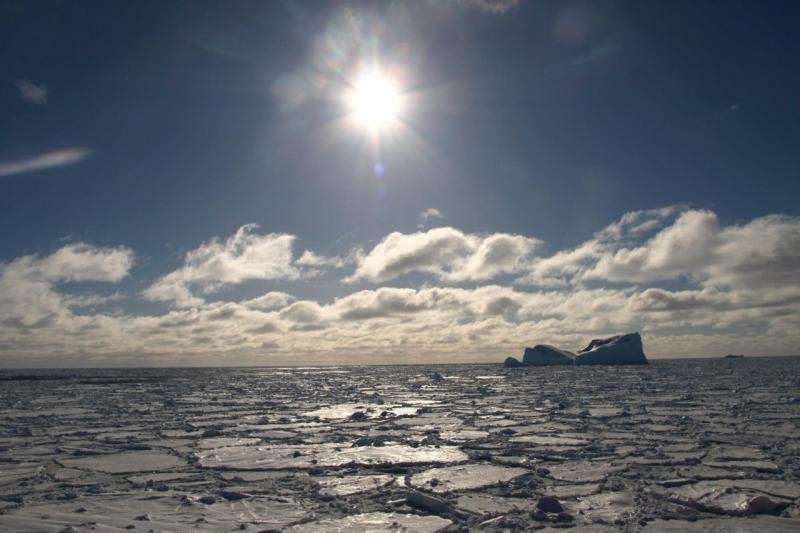Team takes temperature to determine cause of Ice Age

New research by Simon Fraser University professor Karen Kohfeld and University of Tasmania professor Zanna Chase, published in the journal Earth and Planetary Science Letters, examines how the ocean pulled carbon dioxide out of the atmosphere and into the deep sea during the last ice age 125,000 to 18,000 years ago.
Ever since scientists first discovered that carbon dioxide levels were low during ice ages, they have been proposing theories to understand why. Kohfeld and Chase's research uses the fossil record to put together the first global database of ocean temperatures over the last 125,000 years. Their research compiled ocean temperature records with other studies to show how carbon dioxide took different paths into the deep sea during different periods of the ice age.
"This study shows for the first time how temperatures changed across the whole ocean as the earth entered the last ice age," says Karen Kohfeld, Associate Professor in the School of Resource and Environmental Management at Simon Fraser University.
"This new understanding of ocean temperature changes hints at some important thresholds in the climate system. It's clear that some parts of the system- such as sea-ice around Antarctica- responded rapidly when the ocean cooled. Other parts, like deep ocean circulation, changed very slowly and needed a nudge of extra cooling to push the system into a new state, a whole 30,000 years after the sea ice changed."
With direct measurements only providing ocean temperatures for approximately the last 100 years, Kohfeld and Chase turned to chemical and biological clues left by tiny fossils in mud from the sea floor to understand past temperatures. By counting the numbers of cold versus warm fossils of species with known distinct temperature preferences, scientists can estimate past ocean temperatures.
Kohfeld and Chase trawled the scientific literature for studies of past sea surface temperatures. In total, they found data from 136 locations around the globe, amounting to over 40,000 estimates of temperature.
"We've combined the individual efforts of hundreds of scientists," says Zanna Chase, Associate Professor and Australian Research Council Future Fellow at the Institute for Marine and Antarctic Studies, University of Tasmania in Australia. "What comes out is a remarkably clear picture of how the ocean changed during the last ice age."
The team's next step is to combine their new temperature database with paleoclimate models to test their theories.
"We're providing a benchmark dataset that allows scientists to model the ocean and climate from a different time, which can improve our modelling of future relationships between carbon and climate," says Kohfeld.
Fast facts:
- Atmospheric carbon dioxide dropped in several steps over 100,000 years, as the earth entered the last ice age 20,000 years ago.
- Kohfeld's study put together a global picture of how ocean surface temperatures, sea ice, and deep-ocean circulation changed over this time.
- The first drop in carbon dioxide, 115,000 years ago, occurred because of early cooling of the poles and expansion of sea ice around Antarctica
- The second carbon dioxide drop, 70,000 years ago, was accompanied by a re-organization of the deep ocean and heightened ocean productivity
- The lowest, ice age carbon dioxide levels occurred 20,000 years ago when ocean temperatures, productivity, deep circulation, and sea-ice had changed the most
More information: Karen E. Kohfeld et al. Temporal evolution of mechanisms controlling ocean carbon uptake during the last glacial cycle, Earth and Planetary Science Letters (2017). DOI: 10.1016/j.epsl.2017.05.015
Journal information: Earth and Planetary Science Letters
Provided by Simon Fraser University



















